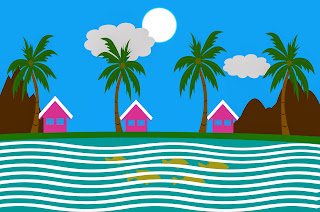What is Ecological Restoration and How Does It Impact Our Environment?
Imagine walking through a lush forest where wildlife thrives, streams run clear, and the air feels fresh and invigorating. Now, picture that same forest decades ago, devastated by deforestation, pollution, or other human activities. The process of bringing that forest back to life is what we call ecological restoration.
Ecological restoration is the practice of renewing and restoring damaged ecosystems to their natural state. This involves a variety of activities, such as planting native trees, removing invasive species, cleaning up polluted areas, and reintroducing wildlife. The goal is to bring an ecosystem back to a healthy, self-sustaining condition where it can support diverse plant and animal life and provide the ecological services—like clean air and water—that we all rely on.
Why Is Ecological Restoration Important?
Our planet’s ecosystems are the backbone of life on Earth. They purify our water, generate oxygen, store carbon, and provide food and habitat for countless species. However, human activities like industrial development, agriculture, and urbanization have severely damaged many of these ecosystems. Ecological restoration helps to reverse this damage, ensuring that these vital ecosystems can continue to function and support life.
Practical Examples of Ecological Restoration
One inspiring example of ecological restoration is the restoration of the Loess Plateau in China. Once a barren landscape, overgrazing and deforestation had turned it into a desert-like environment. Through large-scale reforestation efforts, soil conservation techniques, and sustainable farming practices, the region has been transformed back into a fertile and green landscape, boosting local agriculture and improving the lives of millions of people.
Another example is the Florida Everglades Restoration Project in the United States, one of the largest ecological restoration projects in the world. The Everglades, a unique wetland ecosystem, had been severely impacted by urban development and agricultural runoff. Efforts to restore the natural water flow and rehabilitate habitats are helping to preserve this vital ecosystem and the species that depend on it.
Ecological Restoration in Our Self-Sustainable City
In our self-sustainable city project, ecological restoration plays a critical role. By integrating natural farming, permaculture, and reforestation into our development plans, we ensure that the land we use is not only preserved but enhanced. For example, when we develop a new housing area, we don’t just build; we restore the surrounding land by planting native trees, creating wetlands to manage water runoff, and designing green spaces that mimic natural ecosystems. This not only improves the local environment but also creates a healthier and more beautiful living space for our residents.
Ecological restoration is about more than just fixing what’s broken; it’s about creating a future where humans and nature thrive together. In our city, we are committed to making this vision a reality.
What are your thoughts on ecological restoration? Have you seen any restoration projects in your area? Share your experiences or ask questions in the comments below!
![Self-Sustainable City - Ramakrishna Surathu [Official Website]](https://blogger.googleusercontent.com/img/a/AVvXsEivh2bAyNCG-DxYf4p_lHLcFQx1i8MvbBv91UgzKqAFrNMhT8xW-fwxgNJTdtojgb9aYXiG9EdNYLo8tNmtaakyq-zmnaCeeUGMdpvJ8iOaVzd2tSKEC2UrUXzFJa952LPF-OngfPenpbFOj7b8AcbYtPGSng6xbGr-_NwEIRpXZg_QdKLGRMGeg5pWmtaQ=s1280)

No comments:
Post a Comment